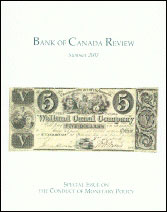August 21, 2002
Monetary Policy and Uncertainty
Central banks must cope with considerable uncertainty about what will happen in the economy when formulating monetary policy. This article describes the different types of uncertainty that arise and looks at examples of uncertainty that the Bank has recently encountered. It then reviews the strategies employed by the Bank to deal with this problem.
The other articles in this special issue focus on three of these major strategies.
